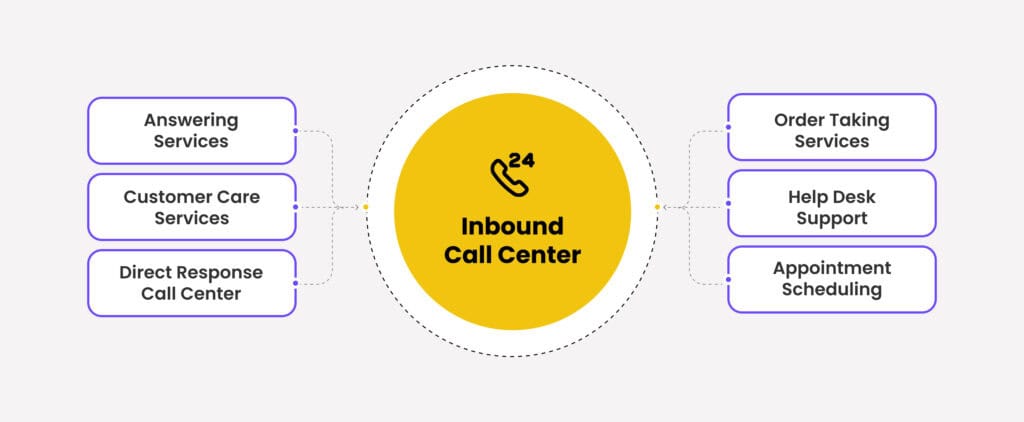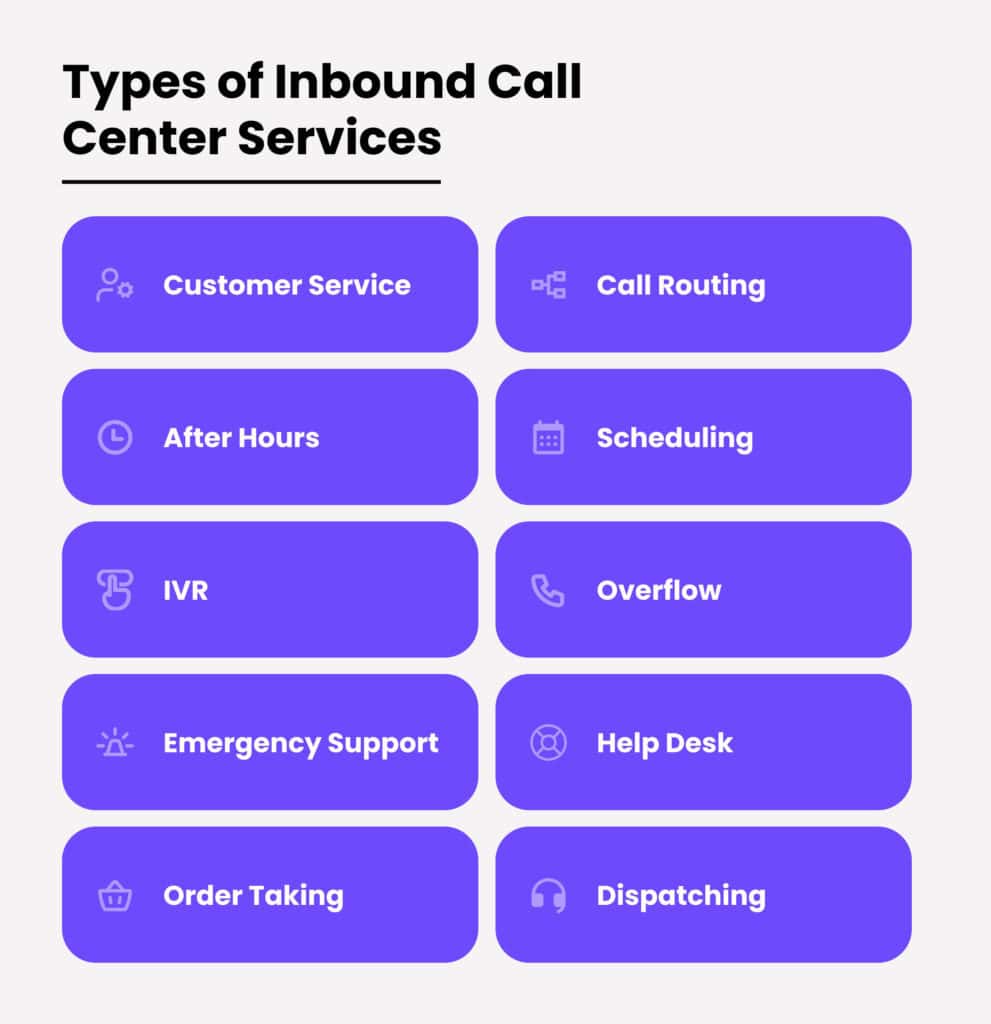Inbound call centers play a key role in creating a great customer experience. When customers get in touch, they want quick, friendly, and helpful support. To deliver on that, having the right tools is one part, but it’s also about managing the process well and understanding best practices. With so many advancements in 2025, what are the most effective inbound call center solutions and management approaches? Let’s explore.
What Is an Inbound Call Center?
To understand the significance of inbound call centers, we first need to define what they are and how they operate. By looking at their purpose, structure, and main functions, we can better understand why they’re so crucial to great customer service.
Definition and Purpose
An inbound call center handles incoming calls from customers—whether they’re asking for support, placing orders, or sharing feedback. The main purpose is to resolve inquiries quickly, keep customers satisfied, and provide a seamless experience that builds loyalty.
How It Operates
Inbound call centers rely on advanced call routing systems to ensure each call is directed to the right person at the right time. Integrating with CRM platforms like CloudCall allows agents to access customer information instantly, making interactions more personal and efficient. By having all the tools in one place, businesses can streamline their communication processes and better support their clients.
Key Functions of Inbound Call Centers

Inbound call centers handle a variety of important tasks that keep customers happy and businesses running smoothly. Their role essentially involves creating a smooth customer experience. When these functions are well managed, they help businesses build stronger relationships and keep customers coming back.
- Answering Customer Questions: Inbound call centers give fast, easy-to-understand answers that resolve issues and build trust—no unnecessary details involved.
- Resolving Issues: They handle technical problems and account issues efficiently, demonstrating the company’s dedication to customer satisfaction.
- Processing Orders: Inbound call centers simplify transactions, helping customers easily place orders, renew services, or make changes.
- Collecting Feedback: They also gather valuable customer input through surveys and follow-up calls, allowing businesses to enhance services.
By focusing on these essential functions—answering questions, resolving issues, processing orders, and collecting feedback—inbound call centers serve as a vital link between businesses and their customers. Their ability to handle these tasks efficiently and professionally not only supports daily operations but also contributes to long-term business success and customer loyalty.
Inbound vs Outbound Call Centers
Inbound and outbound call centers serve different, yet complementary, purposes. While both are about handling customer calls, they differ in their approach and objectives. Knowing these differences helps businesses pick the right call center setup for their needs.
Differences in Call Handling
Inbound call centers specialize in answering calls from customers, whether it’s to ask questions, fix problems, or place an order. The calls are driven by the customers, and the goal is to provide support or information. Outbound call centers, however, see agents reaching out to customers instead. This proactive approach is often used for sales promotions, market research, or following up on previous interactions. The key difference is in who’s making the call—customers call into inbound centers, while agents at outbound centers make the calls to customers.
Primary Goals of Each Type
The goals of inbound and outbound call centers reflect their respective roles. Inbound centers are all about the customer experience—quick responses, smooth solutions, and building loyalty through great service. Outbound centers, on the other hand, drive business growth—connecting with prospects, generating leads, and collecting insights to shape future strategies.
Examples of Use Cases
Inbound call centers are there to help customers when they need it most—like solving tech issues, finding order updates, or arranging replacements. The focus is on quick, direct responses. Outbound centers flip the script, reaching out first—whether it’s to share a promotion, collect feedback, or invite customers to an event. It’s a proactive approach that builds relationships and opens doors for future business.
When businesses understand these differences and adjust their strategies, their call centers can do exactly what’s needed—whether it’s delivering great support, driving new leads, or gathering insights through market research.

Services Offered by Inbound Call Centers
Inbound call centers offer a range of services designed to meet customers’ needs. Here’s a look at their key offerings, and how they help businesses deliver great support and build lasting relationships.
Customer Support and Assistance
From account questions to troubleshooting help, inbound call centers provide the direct support customers need—fostering trust and building lasting relationships.
Technical Help Desk Services
When tech issues arise—whether it’s a setup question or a software glitch—customers turn to inbound call centers for help. Quick solutions lead to happy, loyal customers.
Sales and Order Management
Inbound call centers also handle sales inquiries, process orders, and manage subscriptions. Whether it’s making a purchase, updating a plan, or checking prices, customers get what they need quickly. Smooth sales and order management keep buying easy and relationships strong.
Feedback and Survey Collection

Collecting feedback directly from customers helps businesses identify areas for improvement. Inbound call centers conduct surveys and gather insights that companies can use to refine their products, services, and overall customer experience.
Benefits of Using Inbound Call Centers
Inbound call centers do more than handle calls—they help businesses keep customers happy, improve operations, and build loyalty that lasts.
Improved Customer Satisfaction
When customers get the answers and support they need—fast and with care—they remember it. That’s the power of a well-managed inbound call center.
Increased Operational Efficiency
Efficient call center management, combined with tools like call routing and CRM integration, leads to shorter wait times, fewer call transfers, and more effective issue resolution. This not only makes customers happier but also reduces costs and improves overall productivity.
Enhanced Brand Loyalty
Happy customers stick around—and they spread the word. Inbound call centers that offer great service not only build loyalty but also drive repeat business and glowing reviews.
Key Features of Inbound Call Centers
It’s the advanced tools that make inbound call centers so effective—helping businesses deliver seamless service to customers while keeping operations efficient.
Advanced Call Routing Systems
Modern inbound call centers depend on advanced call routing solutions. These smart systems quickly connect customers to the right agent—like sending tech support queries straight to a specialist—cutting down wait times and resolving issues faster. With tools like CloudCall’s intelligent routing, businesses can deliver smoother experiences while boosting efficiency.
Integration with CRM Tools
Integrating inbound call center software with CRM platforms allows agents to have instant access to customer histories, preferences, and previous interactions. For instance, when a long-time customer calls about an issue with a recurring order, the agent can quickly pull up their past order history and any previous conversations.
This integration streamlines workflows, helps agents resolve issues faster, and creates a more personalized experience. Customers appreciate when the person on the other end of the line already knows their story, which makes the entire interaction simpler, more enjoyable, and more efficient for everyone involved.
Omnichannel Communication Support
Today’s customers want to connect with businesses through various channels, not just over the phone. Inbound call centers support multiple communication methods, including email, chat, and social media, all unified into a single platform. For instance, if a customer starts a support inquiry via email but decides to follow up by phone, the agent can easily pick up where the email left off. With seamless continuity, customers never have to repeat themselves—making every interaction smoother and more satisfying. Omnichannel communication helps businesses meet customers where they are, delivering consistent, top-quality service at every touchpoint.
Automated Customer Service Tools

Automated tools like interactive voice response (IVR) systems and chatbots handle routine inquiries and tasks, freeing up live agents to focus on more complex issues. For example, an IVR system might guide customers through self-service options—like checking a balance or resetting a password—without ever needing to speak with an agent.
Similarly, chatbots handle quick questions—like store hours or return policies—so agents can focus on bigger issues. By automating simple tasks, inbound call centers reduce hold times, manage more calls, and keep service levels high, even during busy periods.
Inbound Call Center Solutions
Finding the right solutions is the key to maintaining a responsive, efficient inbound call center. With top tools and smarter workflows, you can handle calls faster, create better customer experiences, and keep operations running smoothly. For example, streamlining communication paths helps agents solve issues quickly and deliver the service customers expect.
Customizable Call Flow Management
One-size-fits-all doesn’t work for every business. With customizable call flows, companies can shape the customer journey to fit specific needs—getting sales inquiries to sales reps and tech issues to support specialists faster. CloudCall’s flexible call flow tools make it easy to adapt, keeping experiences smooth for both customers and agents.
Intelligent Analytics for Insights
Analytics play a critical role in optimizing call center performance. Detailed contact center analytics provide valuable insights into call trends, agent performance, and customer satisfaction levels. By monitoring these metrics in real-time, companies can quickly identify bottlenecks, improve agent training programs, and make data-driven adjustments to call handling strategies. This level of insight empowers businesses to enhance service quality and boost overall operational efficiency.
Scalability for Business Growth
As businesses grow, so do their communication needs. Scalable inbound call center solutions allow companies to easily add more agents, expand service hours, or integrate new features as needed. Say a growing business begins with daytime-only support. When demand increases, they can quickly scale—adding hours or agents without slowing down. That kind of flexibility keeps the call center efficient as call volumes climb.

Final Thoughts
Inbound call centers are at the heart of great customer experiences. With the right tools and strategies, you’ll not only make operations smoother but also build stronger, lasting connections with your customers—driving real growth for your business.
Frequently Asked Questions
An inbound call center is a facility where businesses handle incoming calls from customers, focusing on providing support, resolving issues, and processing orders.
Inbound call centers primarily receive calls initiated by customers, while outbound call centers make proactive calls to customers, often for sales or marketing purposes.
Inbound call centers provide customer support, technical help desk assistance, sales and order management, and feedback collection.


